Now there are various types of plotters, which differ in the principle of operation, technical characteristics, purpose and other features. To make the right choice when buying, you need to understand all varieties of this equipment.
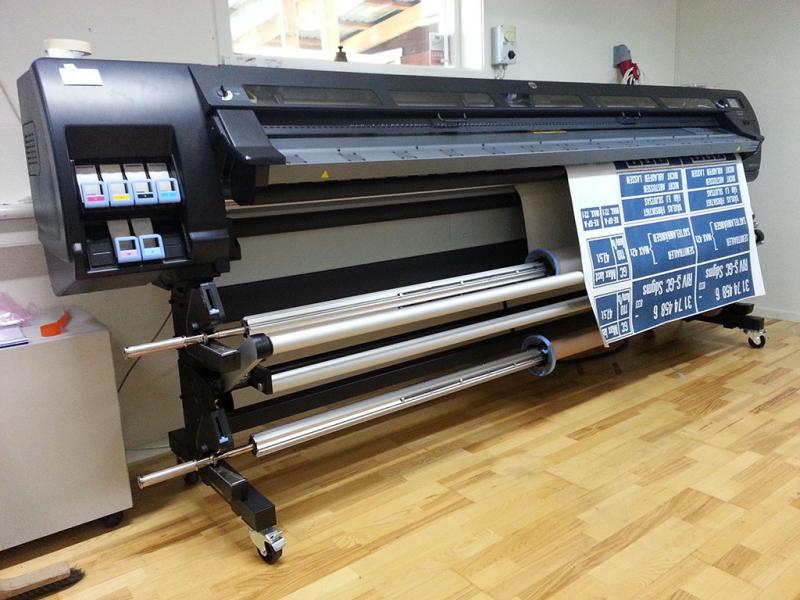
Content
What is a plotter and where is it used?
Plotter is equipment used for large format printing, including A0 format. A plotter, as the plotter is also called, depending on the features of the job, can print not only on paper, but also on other materials, synthetic media, film, and so on. In addition, some models are equipped with a cutting function, which is used when printing on hot-adhesive film, labels, logos and so on.
The plotter performs similar functions to a printer, but specializes in large format printing. It is used for printing:
- drawings and projects;
- advertising posters and announcements;
- topographic maps;
- presentations;
- products on thermal adhesive film and other wide-format materials and so on.
Due to the large size and features of functionality, these devices do not get for home use. The most common applications include:
- design bureaus;
- design companies;
- cartography centers;
- advertising firms;
- printing service companies and so on.
Plotter Classification
All models of devices for large format printing are classified into the following types of plotters:
- feather;
- inkjet;
- electrostatic;
- PPVI;
- thermoplotters;
- laser;
- LED light.
Each of them has its own characteristics and is suitable for solving certain problems.
Pen plotters
Pen devices are called electromechanical equipment of the vector type. A picture or image on paper or other media in such devices is applied with a writing element or pen, which can move in two directions.
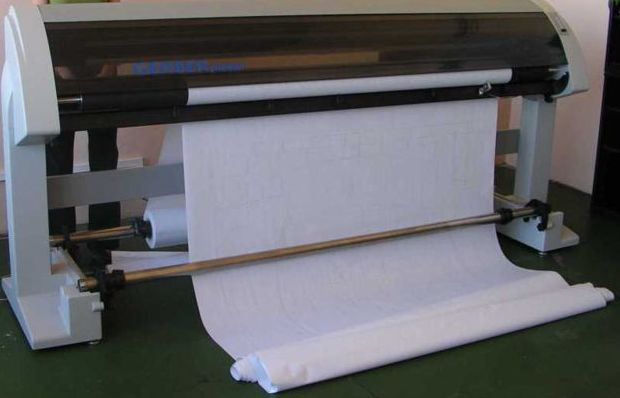
There are models that can work on liquid paints and special pencil leads (pencil-pen plotters). The electric motor is responsible for the movement of the writing element, in connection with this, the equipment makes a lot of noise during operation. Another disadvantage of this type of device is the low printing speed, which manufacturers are unable to overcome even by optimizing the operation of electric motors.
The main advantages of pen plotters are:
- very high print quality;
- high color rendering and contrast when printing color images.
The print quality largely depends not only on the equipment, but also on the consumables - paper and ink.
Inkjet plotters
The inkjet technology used in plotters is a little similar to the technology used in printers. Printing occurs by applying a large number of dots with ink. Usually 4 standard colors are used:
- the black;
- purple;
- yellow;
- blue.
Other colors and their shades are obtained by mixing the primary colors.
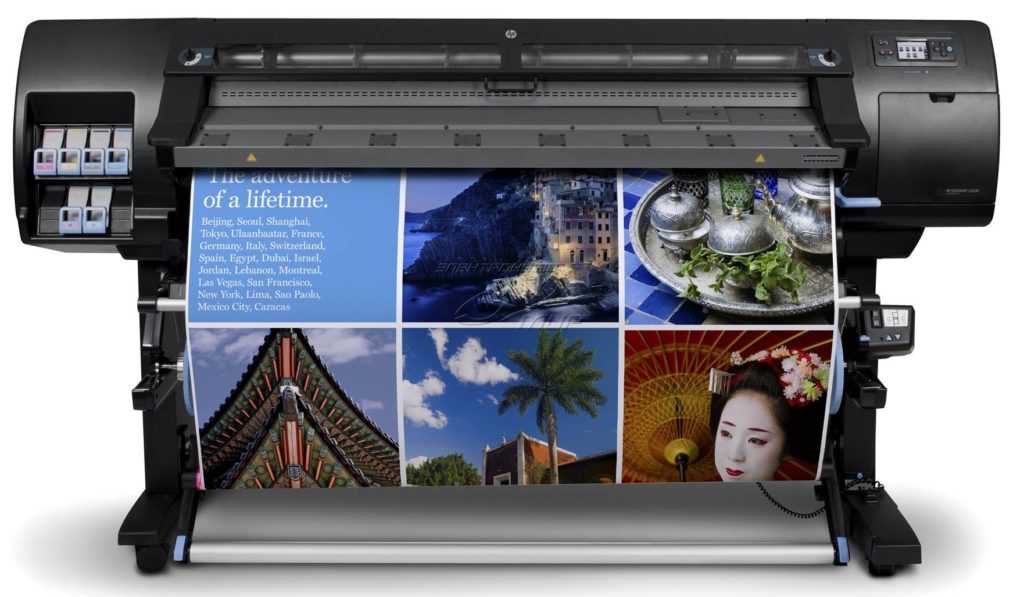 The so-called "bubble" technology, which is now used in inkjet plotters, was developed and patented by Canon, although it is now used by other manufacturers. The print head consists of a huge number of nozzles through which ink is supplied to print an image.Each nozzle has a thermal heater, when heated, a bubble forms with air. He squeezes the paint from the nozzle, and after that the heating element instantly cools down until the next next task.
The so-called "bubble" technology, which is now used in inkjet plotters, was developed and patented by Canon, although it is now used by other manufacturers. The print head consists of a huge number of nozzles through which ink is supplied to print an image.Each nozzle has a thermal heater, when heated, a bubble forms with air. He squeezes the paint from the nozzle, and after that the heating element instantly cools down until the next next task.
Inkjet devices are very popular, as they have many advantages:
- good print speed;
- a high resolution;
- ease and accessibility of service;
- availability of supplies;
- reasonable cost of equipment.
In some models, the flow of colors is regulated, which allows you to get high-quality, clear and vivid images, but requires special skills from the operator. In such devices, the so-called piezo-jet heads are used.
Electrostatic plotters
In electrostatic plotters, an invisible image is applied to special paper, and then liquid paint sticks to the charged particles of the medium. The next and final stage is drying the paper.

The application of this technology allows you to get high-quality and accurate images in a short time, but it also has its drawbacks:
- maintaining temperature and humidity at a certain rate in the room;
- complexity of service;
- high price.
They are an excellent solution for enterprises that demand quality and resolution, as well as those requiring high printing speed and productivity.
Direct Image Plotters
In equipment of this type, the image is applied to thermal paper, impregnated with a special composition. When passing through the "comb" in places exposed to thermal heaters, the paper changes its color, which contributes to the appearance of the image.
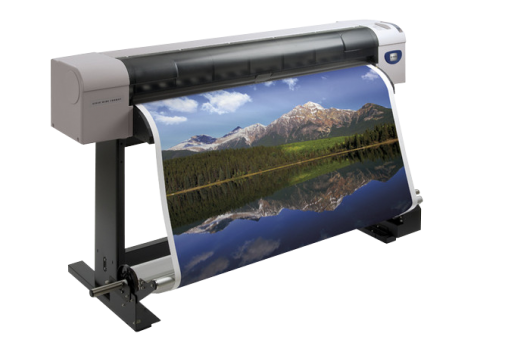
Such equipment is well suited for design and engineering organizations. Despite the monochrome printing, it allows you to get high-quality and accurate images. In addition, such a plotter is undemanding to maintain and does not need to comply with special conditions during operation.
Heat Treatment Plotters
The principle of operation is similar to the above devices (PPVI). The main difference is that when passing thermal paper through the "comb" between them is a special colored donor.
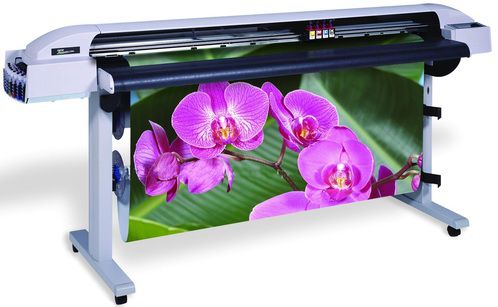
When printing a color image, the process of passing through the comb is repeated as many times as necessary. The main advantage of using this equipment is that the image is resistant to moisture and ultraviolet radiation.
Laser and LED plotters
The printing technology in such devices is very similar to the technology used in laser and LED printers. An invisible image is applied using a laser beam or LEDs, after which toner adheres to charged particles of paper, which is subsequently baked.

LED and laser devices provide high resolution and image quality, as well as high print speed and productivity, but have a significant drawback - high cost.
Cutting plotters
Such equipment is characterized in that it can not only print, but also perform the cutting function. The plotter can cut various materials:
- paper;
- cardboard;
- thermal film;
- vinyl;
- photo paper and so on.
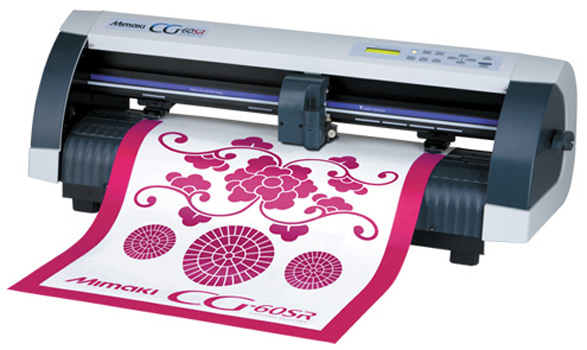 A cutting plotter has found wide application, including advertising and design. A special knife or cutter is responsible for cutting. Due to its versatility, this type of equipment is very popular.
A cutting plotter has found wide application, including advertising and design. A special knife or cutter is responsible for cutting. Due to its versatility, this type of equipment is very popular.
Depending on the location of the media during printing, plotters are classified into the following varieties:
- tablet;
- rolled.
Tablet Plotters
In tablet devices, the media is mounted on a special table and remains stationary during printing. The print element moves. Such equipment is not very popular due to its large size.
Roll plotters
A feature of this equipment is that the roll paper moves on the drum, and in the process of passing through the head, an image is applied to it.
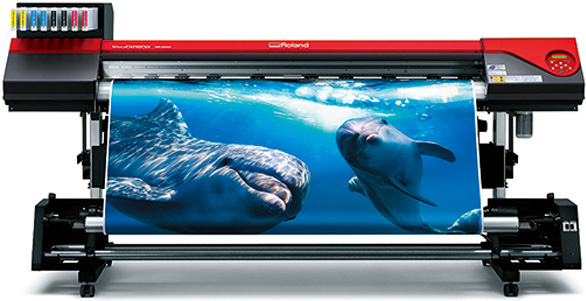
Consumers give preference to roll devices, as they have many advantages:
- take up less space;
- allow you to save consumables;
- suitable for various tasks;
- provide high quality printing.
Features of the choice of plotter
Given the wide range of plotter models presented on the modern consumer market, a potential user should be aware of the basic technical characteristics of the devices in question. The defining indicators rightfully include:
- The purpose of the acquired equipment. So, planning to use the device for printing drawings and maps, you should give preference to devices with a minimum set of functions. The possibilities of "budget" options are enough for the high-quality implementation of "primary tasks". However, with the planned use of the plotter for printing advertisements, banners, and so on, it is advisable to opt for devices with the option of “materializing” color images.
- Maximum cutting width. This indicator is inextricably linked with the format of the material that is compatible with the selected gadget model. In the case of the planned operation of the plotter at home, it is worth choosing a device with a maximum cutting width of 250 mm, and when purchasing the equipment in question for subsequent use in production, the optimal size of the material available for cutting is at least 1000 mm.
- Print speed. An acceptable indicator of the considered characteristic is considered to be a speed of at least 8 - 10 sheets per second. In this case, the plotter will be as productive as possible with moderate power consumption.
- The financial costs of operating the gadget. In this case, we are talking not only about the need to select the type of devices of high-quality assembly under consideration with high strength of individual functional elements, but also plotters that do not require a special media format. In other words, in accordance with this criterion, the selected model must be compatible with all (or an absolute majority) of materials.
- Type of feed. With the further use of the selected equipment at home, it is advisable to pay attention to roll plotters, which are distinguished by their compact design and low cost of consumables. In the case of the planned operation of the purchased plotter in production, tablet models are ideal, with high accuracy in operation, but, as a rule, having impressive dimensions.
- Maximum knife pressure (when choosing a cutting plotter). As a rule, the optimal indicator of the characteristic under consideration is a “strength” of at least 200 g. Devices that meet this requirement will ensure their owner a high-quality performance of their functional “duties” related to cutting the material with minimal energy consumption by the user.
- Warranty from the manufacturer. Given the high cost of the vast majority of equipment models of the segment in question, it is reasonable to pay attention to the warranty period provided by the manufacturer or supplier. On average, the “creators” of the plotter “vouch” for their product during the first 2 years of its use.
In order to form an understanding with the buyer about what parameters a high-quality plotter should have, it is advisable to familiarize yourself with the rating of the top models of 2019 below.
The best models
Silhouette Cameo 3

- Plotter Type: Cutting
- Material Format: A3
- Type of feed: roll
- Maximum cutting width: 305 mm
- Functional knife pressure: 200 g
- Additional properties: built-in Bluetooth adapter
- fast connection that does not require special skills
- ease of use and care
- compactness
- Corel software incompatibility
- unintended fastening of cutting paper in the central part of the device
- high price
Silhouette portrait

- Plotter Type: Cutting
- Material Format: A4
- Type of feed: roll
- Maximum cutting width: 203 mm
- Functional knife pressure: 210 g
- Additional properties: the presence of a USB interface
- light weight and compact design dimensions
- the ability to cut shapes of the desired size from the vast majority of the types of material used
- simple software that is understandable even to a novice user
- build quality
- direct operation volume
- high cost of components
Brother ScanNCut CM900
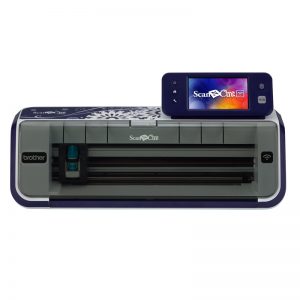
- Plotter Type: Cutting
- Material Format: A3
- Type of feed: roll
- Maximum cutting width: 297 mm
- Cutting speed: 112 mm / s
- Additional properties: functional display; built-in scanner with a resolution of 300 dpi; 15 fonts and 1102 embedded designs, including 140 for quilting; 2 USB ports (for connecting a USB flash drive and connecting to a PC)
- the presence of a built-in screen
- a large number of fonts and designs
- stylish appearance
- high price
- impressive dimensions
- easily soiled material
Brother ScanNCut CM300

- Plotter Type: Cutting
- Material Format: A3
- Type of feed: roll
- Maximum cutting width: 297 mm
- Cutting speed: 112 mm / s
- Additional properties: functional display; built-in scanner with a resolution of 300 dpi; 5 fonts and 601 integrated designs, including 100 for quilting; 2 USB ports (for connecting a USB flash drive and connecting to a PC)
- the presence of a built-in screen
- base provided by the manufacturer as standard
- reliable USB interface
- the need to purchase components "to order"
- incomprehensible interface
- noise generated by the mechanism during direct operation
GRAPHTEC CE6000-40

- Plotter Type: Cutting
- Material Format: A3
- Type of feed: roll
- Maximum cutting width: 375 mm
- Cutting speed: 600mm / s
- Additional properties: functional display; built-in USB interface; RS-232C
- optical positioning
- powerful servomotor
- high quality functional knives
- high cost of consumables
- impressive construction dimensions
- difficult plotter installation, requiring special knowledge and skills